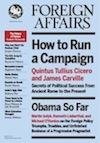From the start, the euro has rested on a gamble. When European leaders opted for monetary union in 1992, they wagered that European economies would converge toward one another: the deficit-prone countries of southern Europe would adopt German economic standards — lower price inflation and wage growth, more saving, and less spending — and Germany would become a little more like them, by accepting more government and private spending and higher wage and price inflation. This did not occur. Now, with the euro in crisis, the true implications of this gamble are becoming clear.
Over the past two years, the eurozone members have done a remarkable job managing the short-term symptoms of the crisis, although the costs have been great. Yet the long-term challenge remains: making European economies converge, that is, assuring that their domestic macroeconomic behaviors are sufficiently similar to one another to permit a single monetary policy at a reasonable cost. For this to happen, both creditor countries, such as Germany, and the deficit countries in southern Europe must align their trends in public spending, competitiveness, inflation, and other areas.
This article was originally published by Foreign Affairs. You can read the rest of the article here.
You can read exclusive content from Gateway House: Indian Council on Global Relations, here.
Copyright © 2012 by the Council on Foreign Relations, Inc


